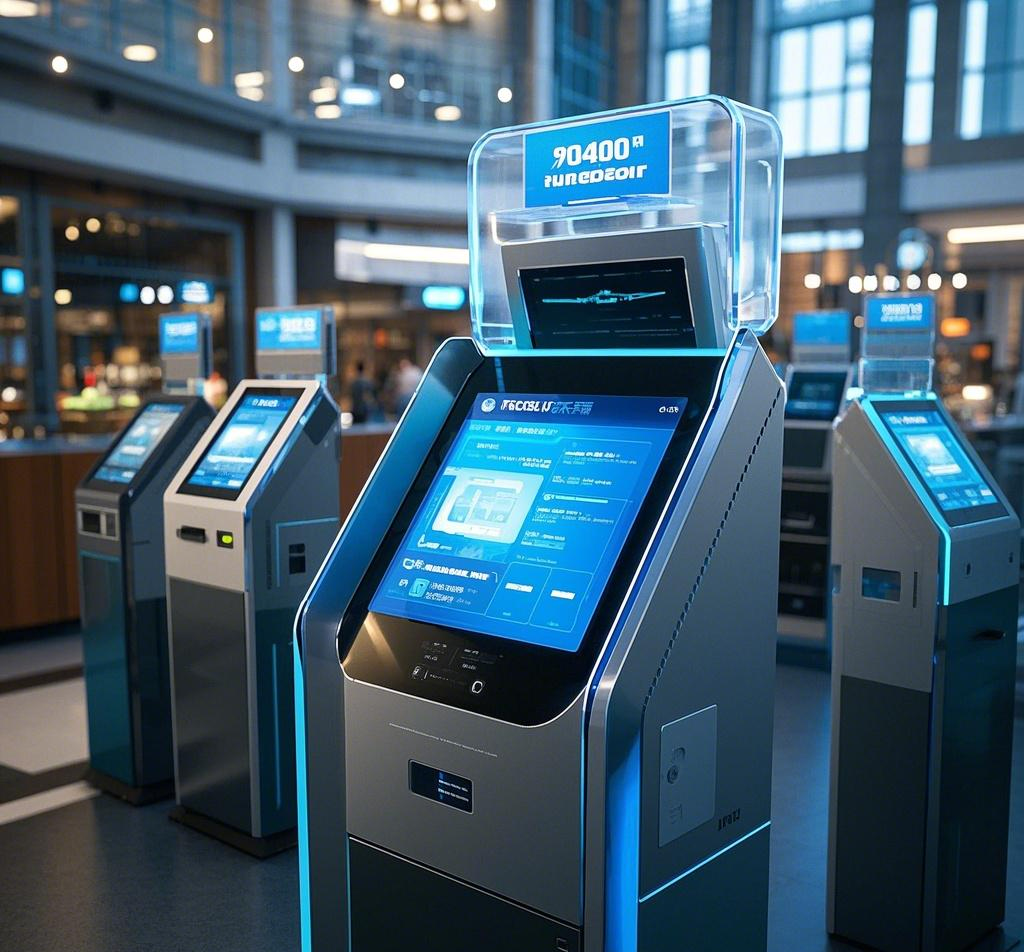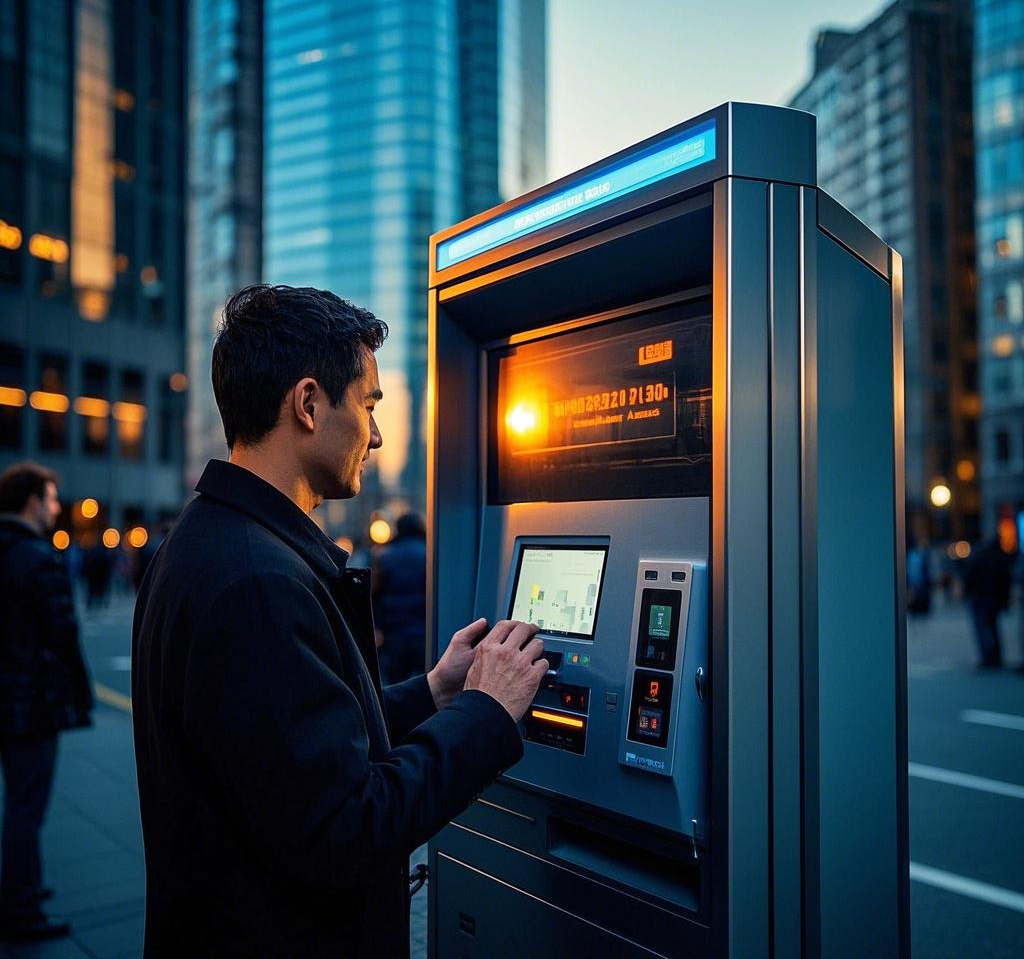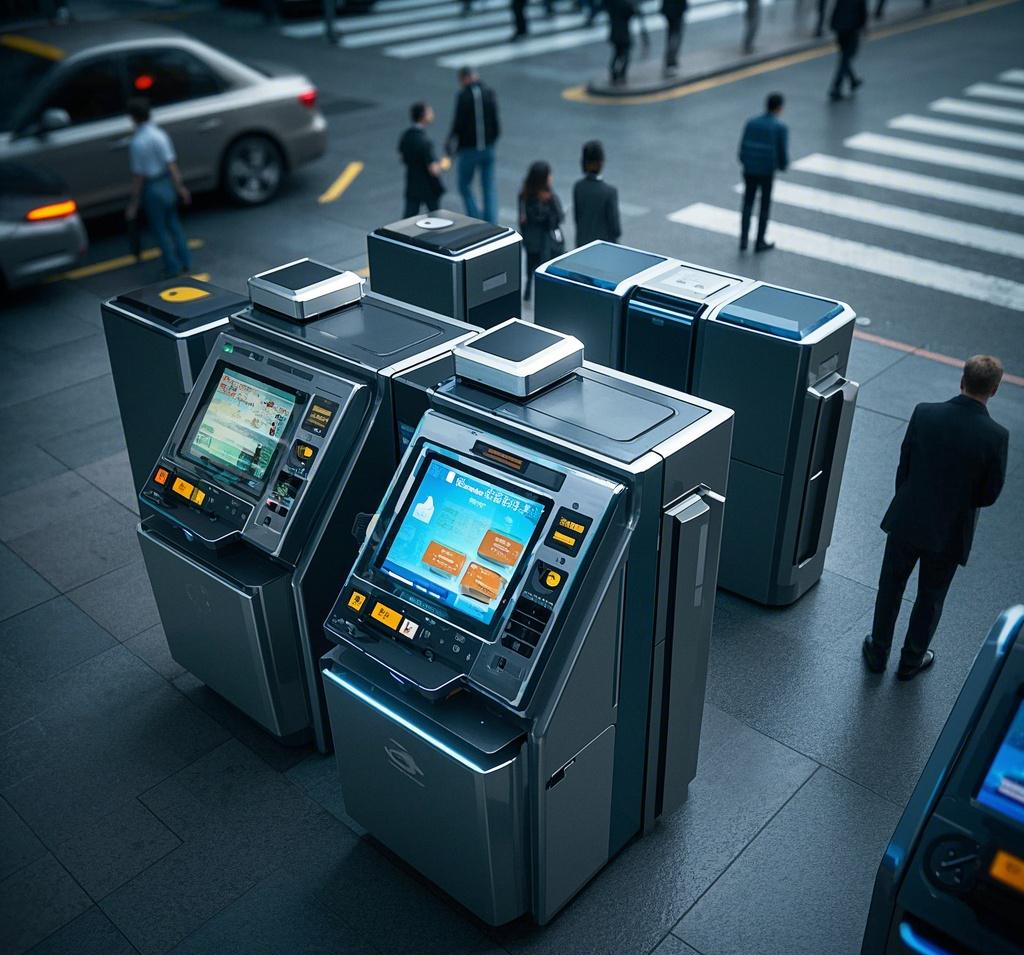Smart kiosks seamlessly innovate and change urban life
In the heart of a bustling city, where the hum of traffic blends with the chatter of pedestrians, I found myself standing before a sleek, glowing machine—a smart kiosk. It wasn’t just a piece of technology; it felt like a portal to the future, a bridge between human needs and digital solutions. I tapped the screen, and in seconds, I had purchased a train ticket, checked the weather, and even ordered a coffee from a nearby café. It was effortless, almost magical. Yet, as I stepped back, I couldn’t help but wonder: how did these smart kiosks become so integral to our daily lives? What drives their innovation, and where are they taking us next? This isn’t just about convenience—it’s about a transformation in how we interact with the world around us.
Smart kiosks have quietly woven themselves into the fabric of urban existence, popping up in train stations, malls, hospitals, and even quiet suburban corners. They’re more than machines; they’re problem-solvers, time-savers, and sometimes even lifesavers. I’ve spent months diving into their world—researching their technology, speaking with engineers, and observing their impact on people like you and me. What I’ve uncovered is a story of innovation, challenges, and untapped potential that deserves to be told.

The Rise of Smart Kiosks: A Personal Encounter
My first real interaction with a smart kiosk wasn’t in a futuristic metropolis but in a small airport during a layover. I was late, stressed, and fumbling with my phone to check in for my flight. The airline counter had a line snaking around the corner, and I was on the verge of missing my boarding window. Then I saw it: a compact, touchscreen smart kiosk glowing invitingly near the entrance. Skeptical but desperate, I approached it. Within two minutes, I had checked in, printed my boarding pass, and even selected a better seat—all without speaking to a single person. It felt like the machine understood my urgency, cutting through the chaos with a kind of digital empathy.
That experience stuck with me. Smart kiosks aren’t just about automation; they’re about empowerment. They give us control in moments of chaos, whether it’s printing a ticket, paying a bill, or navigating a foreign city. But how did they get here? The technology behind them is a fascinating blend of hardware and software, often powered by robust systems like the RK3588 chipset—a powerhouse in embedded computing that’s driving much of this innovation. The RK3588, with its octa-core architecture and neural processing unit (NPU)¹, enables these kiosks to handle complex tasks like real-time data processing and AI-driven interactions with ease.
The Technology Behind the Magic
At their core, smart kiosks are a symphony of hardware and software working in unison. The hardware typically includes a durable touchscreen, a high-resolution display, and often a suite of sensors—cameras for facial recognition, RFID² readers for contactless payments, or even thermal sensors in healthcare settings. The brains of the operation, however, lie in chips like the RK3588. I spoke with a hardware engineer at a tech conference who explained how the RK3588’s energy efficiency and processing power make it ideal for smart kiosks. “It’s not just about speed,” she said, “it’s about reliability. These machines need to run 24/7 without overheating or crashing, and the RK3588 delivers that stability.”
On the software side, smart kiosks run on operating systems like Android or Linux, often customized with layers of middleware³ to integrate various applications—think payment gateways, mapping services, or even telemedicine platforms. The result is a seamless user experience that feels intuitive, even for those who aren’t tech-savvy. I’ve watched elderly people in hospitals use these kiosks to check in for appointments, their hesitant taps turning into confident swipes as the interface guides them step by step. It’s a small but profound victory for accessibility.

To give you a clearer picture of the components at play, here’s a breakdown of a typical smart kiosk setup:
| Component | Function | Example Technology |
|---|---|---|
| Touchscreen | User interaction | Capacitive multi-touch |
| Processor | Data processing, AI tasks | RK3588 chipset |
| Sensors | Payment, recognition, monitoring | RFID, facial recognition |
| Connectivity | Internet, cloud integration | 5G, Wi-Fi 6 |
This table simplifies a complex system, but it highlights how each piece contributes to the whole. The RK3588, in particular, stands out for its ability to handle multiple tasks simultaneously—running the display, processing payments, and even analyzing user data for personalized recommendations.
The Impact on Everyday Life
Smart kiosks aren’t just changing how we interact with technology; they’re reshaping our daily routines. Take retail, for instance. In fast-food chains like McDonald’s, smart kiosks have become a staple, allowing customers to customize orders without the pressure of a cashier waiting impatiently. I’ve stood behind these kiosks during lunch rushes, watching as people breeze through their orders, while others—like me—take their time exploring the menu. It’s a small freedom, but it matters.
In healthcare, the impact is even more profound. During a visit to a local clinic, I noticed a smart kiosk in the lobby where patients could check in, update their medical history, and even measure their blood pressure—all before seeing a doctor. The kiosk used an RK3588-powered system to process data in real time, flagging potential issues for nurses to review. A nurse I spoke with mentioned how these machines have reduced wait times by nearly 20%, freeing up staff to focus on more critical tasks. “It’s like having an extra pair of hands,” she said, “but one that never gets tired.”
Here’s a quick look at how smart kiosks are being deployed across industries:
| Industry | Use Case | Benefit |
|---|---|---|
| Retail | Self-checkout, order placement | Faster service, less staff |
| Healthcare | Check-in, vital monitoring | Reduced wait times, accuracy |
| Transportation | Ticketing, wayfinding | Streamlined travel |
These examples barely scratch the surface. From libraries offering book checkouts to museums providing interactive guides, smart kiosks are everywhere, quietly making life easier. Their density in urban areas is growing—experts estimate that by 2025, there could be over 1 million smart kiosks worldwide, each one a node in a vast network of digital convenience.
Challenges and Concerns: A Double-Edged Sword
But it’s not all smooth sailing. As I dug deeper, I found that smart kiosks come with their share of challenges. Privacy is a big one. Many of these machines use cameras and sensors to collect data—sometimes more than users realize. I recall using a smart kiosk at a mall that asked for my email to send a receipt. It seemed harmless, but later I received targeted ads based on my purchases. It left me wondering: how much of our data are we unknowingly handing over?
Cybersecurity is another concern. With so much personal information flowing through these systems, they’re prime targets for hackers. A report I read highlighted a 2023 incident where a chain of smart kiosks was breached, exposing thousands of users’ payment details. Manufacturers are working to bolster security—using encryption and zero-trust models⁴—but the risk remains. The RK3588 chipset helps here too, with built-in security features like secure boot and hardware encryption, but no system is foolproof.
Accessibility is another hurdle. While smart kiosks are designed to be user-friendly, they can still be daunting for people with disabilities. I watched a visually impaired man struggle with a kiosk that lacked proper audio guidance, his frustration palpable. It reminded me that technology isn’t truly transformative unless it’s inclusive. Thankfully, some companies are addressing this—integrating voice commands and haptic feedback—but there’s still work to be done.

The Future: Where Are Smart Kiosks Taking Us?
Despite these challenges, the future of smart kiosks is bright—and endlessly fascinating. I’ve spoken with developers who are experimenting with augmented reality (AR) interfaces, where users can interact with holographic displays instead of flat screens. Imagine walking up to a smart kiosk in a museum and seeing a 3D model of an artifact you can rotate with a gesture. It’s not science fiction—it’s already in prototype stages, often powered by chips like the RK3588 for real-time rendering.
AI is another frontier. Smart kiosks are getting smarter, thanks to machine learning algorithms that analyze user behavior and adapt in real time. A developer I met at a tech expo described a project where kiosks in train stations learn commuters’ habits—suggesting tickets or routes based on past trips. It’s a small step toward predictive technology, but it could revolutionize how we navigate cities.
Sustainability is also coming into focus. As cities grow more eco-conscious, manufacturers are designing smart kiosks with energy-efficient components—like the RK3588’s low-power modes—and recyclable materials. I visited a pilot project in Seattle where solar-powered kiosks provide free Wi-Fi and charging stations, blending utility with environmental responsibility.
A Personal Reflection: Why It Matters
As I write this, I’m sitting in a café across from a smart kiosk that’s helping people buy bus tickets. Every few minutes, someone approaches it—some hesitant, others confident—and walks away with a smile. It’s a small thing, but it’s a reminder of why I wanted to explore this topic. Smart kiosks aren’t just machines; they’re enablers. They give us time, freedom, and access in a world that often feels overwhelming.
But they’re also a mirror, reflecting our relationship with technology. They challenge us to balance convenience with privacy, innovation with inclusivity. As they continue to evolve—powered by systems like the RK3588 and driven by human ingenuity—they’ll shape not just our cities, but our lives. And that, to me, is a story worth telling.
Notes
- NPU (Neural Processing Unit): A specialized processor designed for accelerating machine learning tasks, often used in AI-driven applications.
- RFID (Radio Frequency Identification): A technology that uses electromagnetic fields to automatically identify and track tags attached to objects.
- Middleware: Software that acts as a bridge between an operating system or database and applications, especially in networked environments.
- Zero-trust model: A security framework that assumes no user or device is inherently trustworthy, requiring continuous verification for access.
